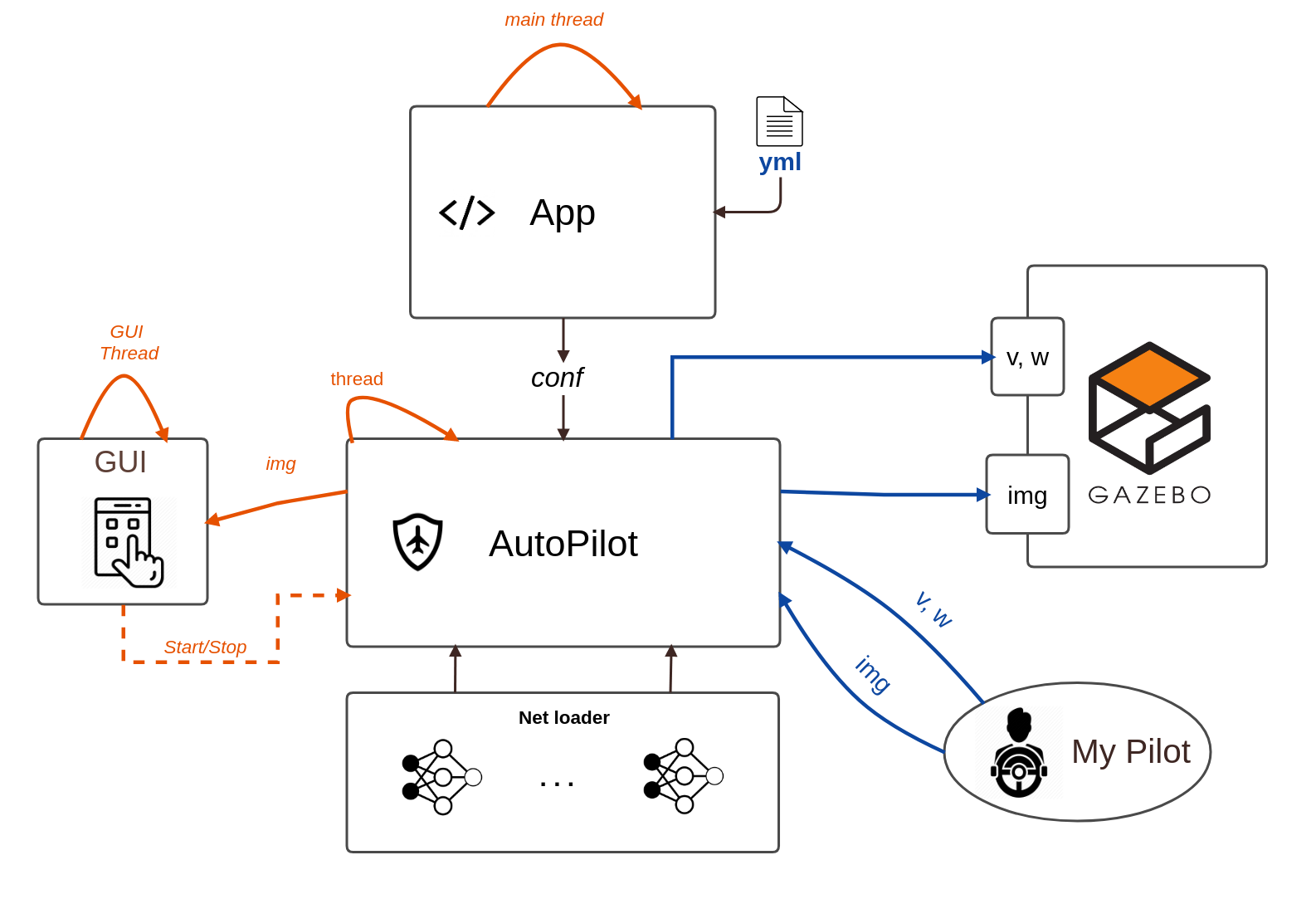This project presents different approaches to the follow-the-line exercise but using artificial intelligence to complete the circuits. The solutions presented are:
- Using classification networks.
- Using regression networks.
- Using reinforcement learning.
- Solution for real robots.
Index of the project:
Behavior Suite project has the following structure (WIP):
We are currently redesigning the project. The following functional requirements have been specified:
| Number | Description | Status |
|---|---|---|
| RF01 | Changing run-time intelligence | WIP |
| RF02 | Save tagged dataset (IMG + ROSbags, cmd-vel) | WIP |
| RF03 | 'Manual' Autopilot. User solution (OpenCV) | DONE |
| RF04 | Teleoperation | WIP |
| RF05 | Benchmarking (neuronal network vs groundthruth, checkpoints, center desviation, ...) | - |
| RF06 | Support for different environments (TensorFlow, Keras, Pytorch, OpenCV, ...) | WIP |
| RF07 | User profiles (configuration file) | - |
The following table contains non-functional requirements:
| Number | Description | Status |
|---|---|---|
| RN01 | Real time | - |
| RN02 | Memory | - |
| RN03 | GPU-Ready | - |
Zhicheng Li, Zhihao Gu, Xuan Di, Rongye Shi. An LSTM-Based Autonomous Driving Model Using Waymo Open Dataset. arXiv e-prints, art.arXiv:2002.05878, Feb 2020. https://arxiv.org/abs/2002.05878
Pei Sun et at. Scalability in Perception for Autonomous Driving: Waymo Open Dataset. arXiv e-prints, art.arXiv:1912.04838, Dec 2019. https://arxiv.org/abs/1912.04838 (Waymo Open Dataset)[https://waymo.com/open/]


